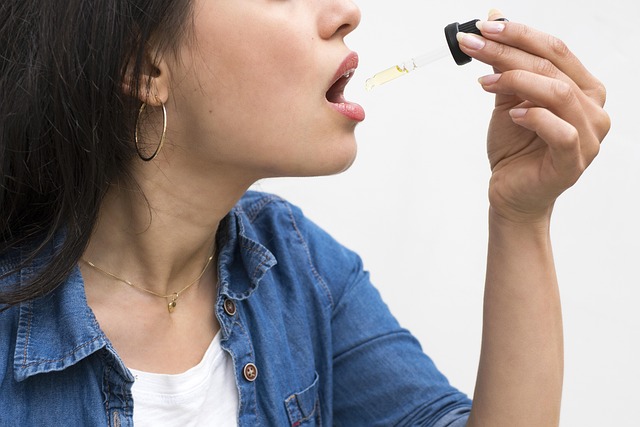High potency cannabinoids (HPCs), characterized by THC concentrations exceeding 20%, offer intense therapeutic effects but require meticulous lab testing for safety and consistency. Laboratories play a critical role in ensuring product quality, purity, and potency through advanced techniques like LC-MS and GC-MS, driving innovation and consumer trust. Stricter regulations worldwide safeguard consumers by setting standards for HPC products, especially in the medical cannabis and wellness sectors. Future trends include enhanced chromatography and AI for faster, more precise testing, revolutionizing the market with safer, effective cannabinoids.
High potency cannabinoids are transforming the cannabis industry, offering enhanced therapeutic benefits but also demanding stringent safety and quality assurance. This article delves into the crucial role of laboratories in navigating this evolving landscape. We explore fundamental knowledge of high-potency cannabinoids, advanced testing methods, regulatory standards, and real-world case studies. By understanding common challenges and future trends, we emphasize the critical impact of rigorous lab testing on consumer safety and the overall success of cannabis products.
Understanding High Potency Cannabinoids: The Basics

Cannabinoids, the active compounds in cannabis, come in various forms with differing levels of potency and effects. Among them, high potency cannabinoids have gained significant attention for their concentrated therapeutic benefits. These potent compounds offer more intense experiences compared to lower-potency options, making lab testing crucial to ensure safety and consistency.
Understanding the basics of high potency cannabinoids involves recognizing their powerful chemical profiles. With concentrations often exceeding 20% THC (tetrahydrocannabinol), these compounds can deliver profound physical and mental effects. Lab testing enables researchers and manufacturers to analyze and confirm cannabinoid profiles, ensuring products meet expectations and providing consumers with reliable information about what they’re using.
The Role of Labs in Ensuring Safety and Quality

In today’s market, especially with the rise of high potency cannabinoids, ensuring safety and quality is paramount. Laboratories play a crucial role in this regard, serving as the backbone for rigorous testing and verification processes. These facilities employ advanced techniques to analyze products, confirming their potency, purity, and overall safety for consumer use. By implementing strict standards, labs help manufacturers maintain consistency and meet regulatory requirements, thereby fostering trust among consumers.
Moreover, labs enable product innovation by providing a controlled environment for research and development. They facilitate the discovery of novel cannabinoid compounds, study their effects, and optimize extraction methods. This scientific approach ensures that products on the market are effective, safe, and of high quality, ultimately benefiting both producers and consumers.
Advanced Testing Methods for Cannabinoid Potency

In today’s quest for high potency cannabinoids, scientific research has led to the development of advanced testing methods. These innovative techniques allow laboratories to meticulously assess and quantify the concentration of various cannabinoids, ensuring consistent quality control. One such method involves using liquid chromatography-mass spectrometry (LC-MS), which provides unparalleled accuracy in identifying and measuring compounds like THC and CBD. This technology separates cannabinoids based on their unique chemical properties, enabling precise quantification.
Additionally, gas chromatography-mass spectrometry (GC-MS) has emerged as another powerful tool. Unlike LC-MS, GC-MS utilizes a gaseous phase to separate cannabinoids, making it particularly useful for volatile compounds. Together, these advanced methods have revolutionized cannabinoid testing, fostering the development of premium, high-potency products while safeguarding consumers from inconsistent or contaminated supplies.
Regulatory Standards for High-Potency Cannabis Products

In the realm of cannabis production, high-potency cannabinoids have become a focal point, driving the demand for stringent regulatory standards. As these potent compounds offer enhanced therapeutic benefits, their synthesis and distribution necessitate meticulous control to ensure safety and efficacy. Regulatory bodies worldwide are implementing rigorous guidelines to govern the manufacturing process, product labeling, and quality assurance of high-potency cannabis products.
These standards encompass comprehensive testing procedures, mandating that laboratories verify the potency, purity, and consistency of cannabinoids like THC and CBD. The regulatory framework also addresses potential contaminants, ensuring products meet safety benchmarks. Such measures are pivotal in establishing consumer trust and fostering a responsible cannabis industry, especially as high-potency products gain popularity in today’s market.
Case Studies: Successful Lab Testing Real-World Applications

In the realm of High Potency Cannabinoids (HPCs), lab testing serves as a crucible for validation and quality assurance. Case studies illustrate the successful transition from controlled laboratory settings to real-world applications, where HPC products have made a significant impact. For instance, rigorous lab testing has enabled the development of precision dosages for medical cannabis, allowing patients with specific conditions to receive tailored treatments. These formulations, crafted through meticulous experimentation, have shown remarkable effectiveness in managing pain, reducing anxiety, and even helping patients with severe neurological disorders.
Moreover, lab testing has facilitated the creation of innovative HPC products, such as advanced topicals and edible formulations, which offer discreet and targeted delivery methods. The scientific rigor applied in labs ensures that these products meet stringent safety and efficacy standards, fostering consumer confidence and promoting their widespread adoption. As a result, many patients now benefit from the therapeutic potential of High Potency Cannabinoids, with real-world applications extending beyond traditional medicine to areas like wellness and lifestyle enhancements.
Common Challenges in High Potency Cannabinoid Analysis

Analyzing high potency cannabinoids presents unique challenges in laboratory settings. One significant hurdle is the complex and dynamic nature of these compounds, which can vary greatly in structure and concentration. This variability makes precise measurement and characterization difficult, especially when dealing with novel or lesser-studied cannabinoids.
Additionally, the highly sensitive detection methods required for high-potency analysis can be prone to interference from residual solvents, other plant metabolites, or even laboratory equipment. Ensuring the purity of samples and employing advanced instrumental techniques like liquid chromatography coupled with mass spectrometry (LC-MS) are crucial steps to overcome these challenges. These methods allow for accurate quantification and identification of cannabinoids, providing essential data for product quality control and safety assessments.
Future Trends in Laboratory Testing for Cannabis

As the cannabis industry continues to evolve, so does the need for advanced and innovative laboratory testing methods. Future trends in cannabis lab testing are focused on enhancing accuracy, speed, and efficiency to meet the growing demands of the market. One key area of focus is the detection of high potency cannabinoids, with advancements in chromatography techniques allowing for precise measurement of THC, CBD, and other cannabinoid profiles. This not only ensures product quality and consistency but also aids in developing tailored medicinal formulations.
Additionally, emerging technologies like artificial intelligence (AI) and machine learning are set to revolutionize lab testing processes. AI-driven systems can analyze vast datasets, predict cannabinoid interactions, and optimize test procedures, leading to more efficient and reliable cannabis product analysis. These innovations promise to streamline laboratory operations, reduce costs, and ultimately provide consumers with safer and more effective cannabis products.
Ensuring Consumer Safety: The Impact of Rigorous Lab Testing

In today’s market, ensuring consumer safety is paramount, especially with products containing high potency cannabinoids. Rigorous lab testing plays a pivotal role in this regard, acting as a shield against potentially harmful substances and providing consumers with peace of mind. These tests meticulously scrutinize every batch, verifying both potency and purity, and identifying any contaminants or pesticides that may pose risks to health.
By subjecting products to such rigorous scrutiny, manufacturers can confidently assure customers that their products meet the highest standards of safety. This process is especially crucial for cannabinoids, as their complex interactions within the body necessitate a thorough understanding of each compound’s effects. Lab testing bridges this knowledge gap, enabling businesses to deliver safe, effective, and reliable products to their customers.
